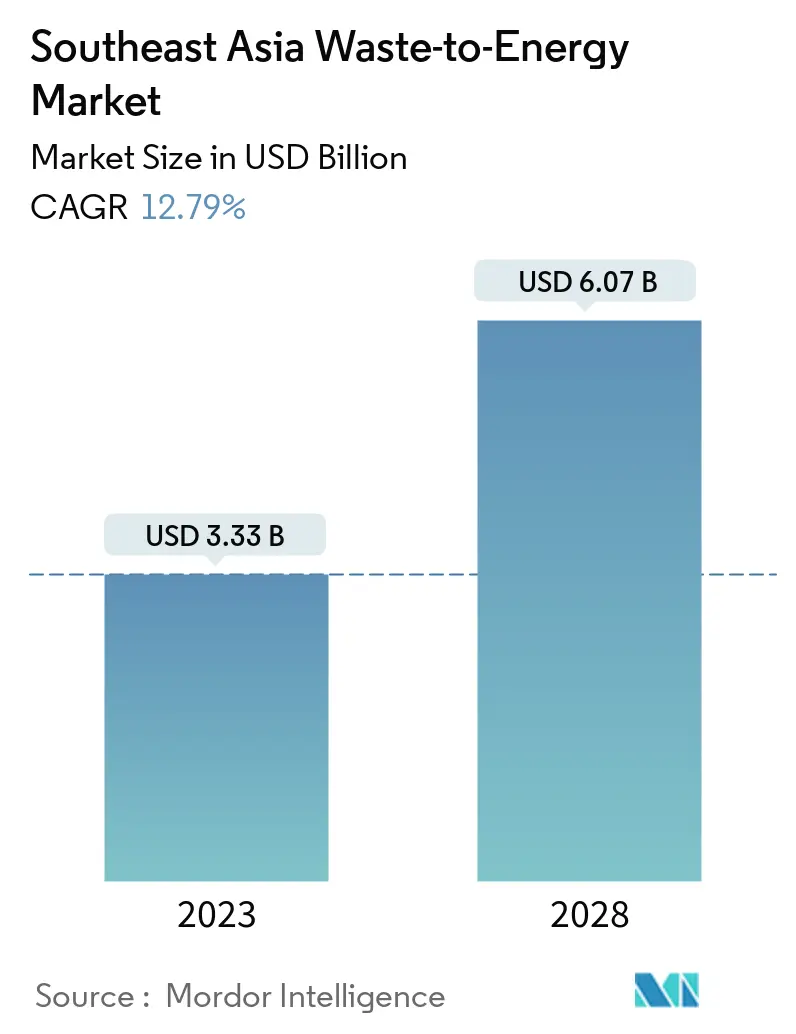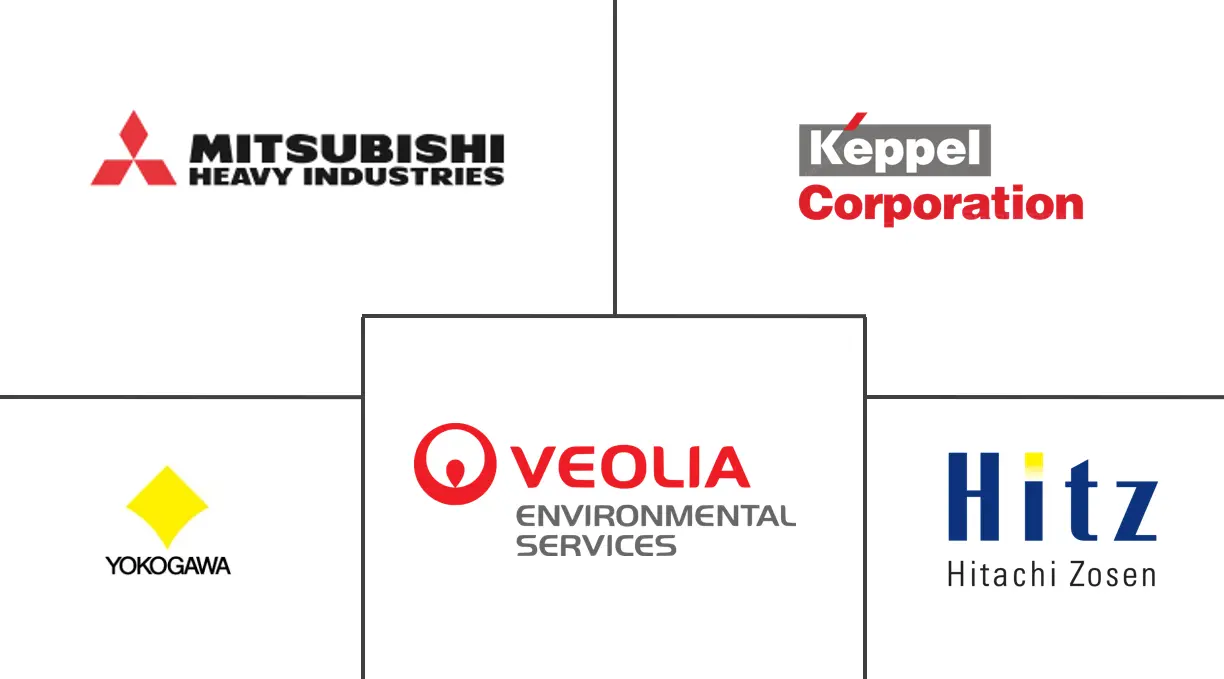Market Size of Southeast Asia Waste-to-Energy Industry

| Study Period | 2019 - 2028 |
| Base Year For Estimation | 2021 |
| Forecast Data Period | 2023 - 2028 |
| Market Size (2023) | USD 3.33 Billion |
| Market Size (2028) | USD 6.07 Billion |
| CAGR (2023 - 2028) | 12.79 % |
Major Players
*Disclaimer: Major Players sorted in no particular order |
Need a report that reflects how COVID-19 has impacted this market and its growth?
Southeast Asia Waste-to-Energy Market Analysis
The Southeast Asia Waste-to-Energy Market size is expected to grow from USD 3.33 billion in 2023 to USD 6.07 billion by 2028, at a CAGR of 12.79% during the forecast period (2023-2028).
With the COVID-19 outbreak, the sector witnessed a significant negative impact. Lack of uncertainty for achieving the sustainable development's goal in waste management, the sector witnessed slower developments on the waste-to-energy projects in 2020. Factors such as supportive government policies and schemes are expected to drive the market. However, the involvement of environmental concerns in technology like incineration is expected to hinder the market growth during the study period.
• Thermal technology is expected to dominate the waste-to-energy market in the coming years, owing to the increasing development in incineration and gasification technologies, as well as the increasing amount of waste generated, especially from the emerging economies of Asia-Pacific.
• Emerging waste-to-energy technologies, such as Dendro Liquid Energy (DLE), which is four times more efficient in terms of electricity generation, with additional benefits of no emission discharge and effluence problems at plant sites, are expected to create significant opportunities for the market players, over the coming years.
• Malaysia is one of the fastest growing countries in the Southeast Asian region. The country has ramped up its efforts in improving the waste management situation, in which waste-to-energy plays a key role.
